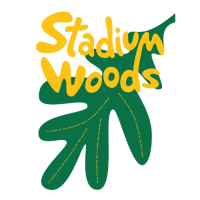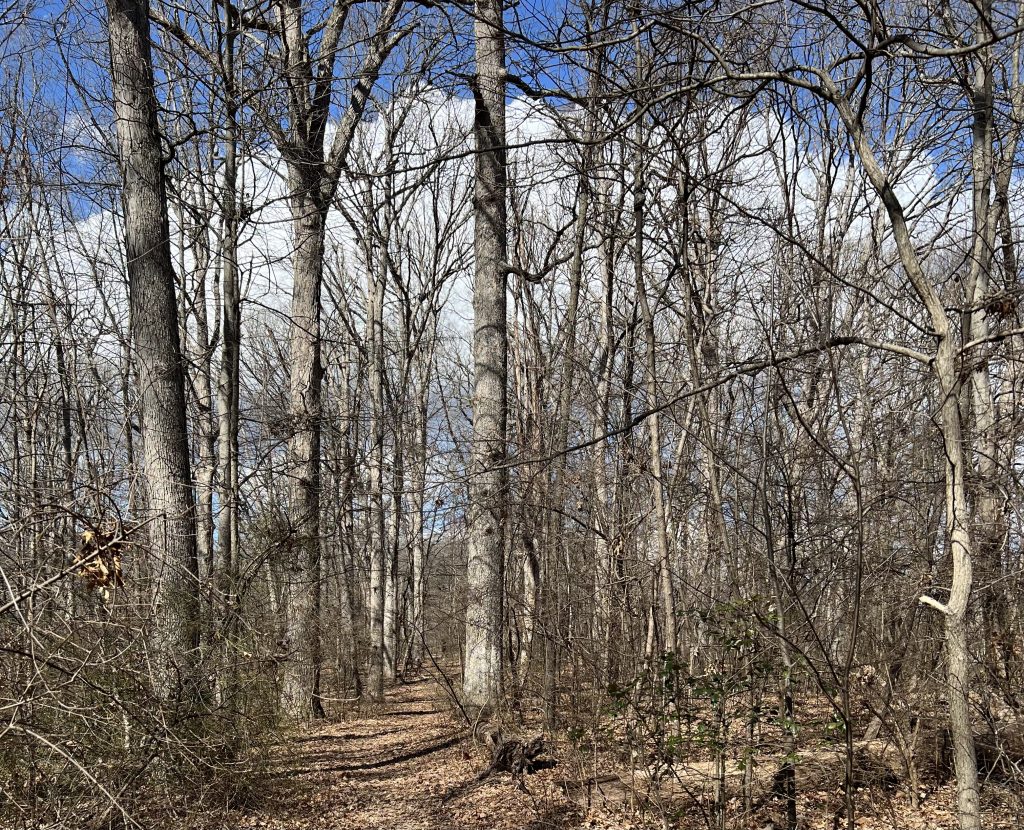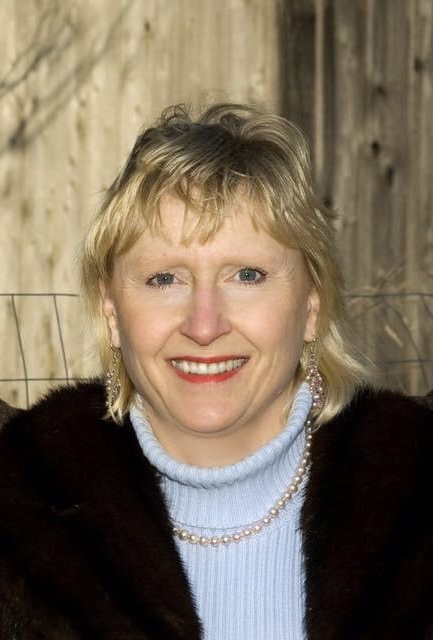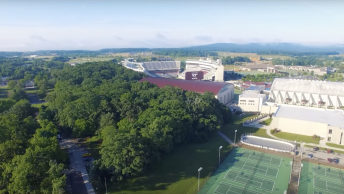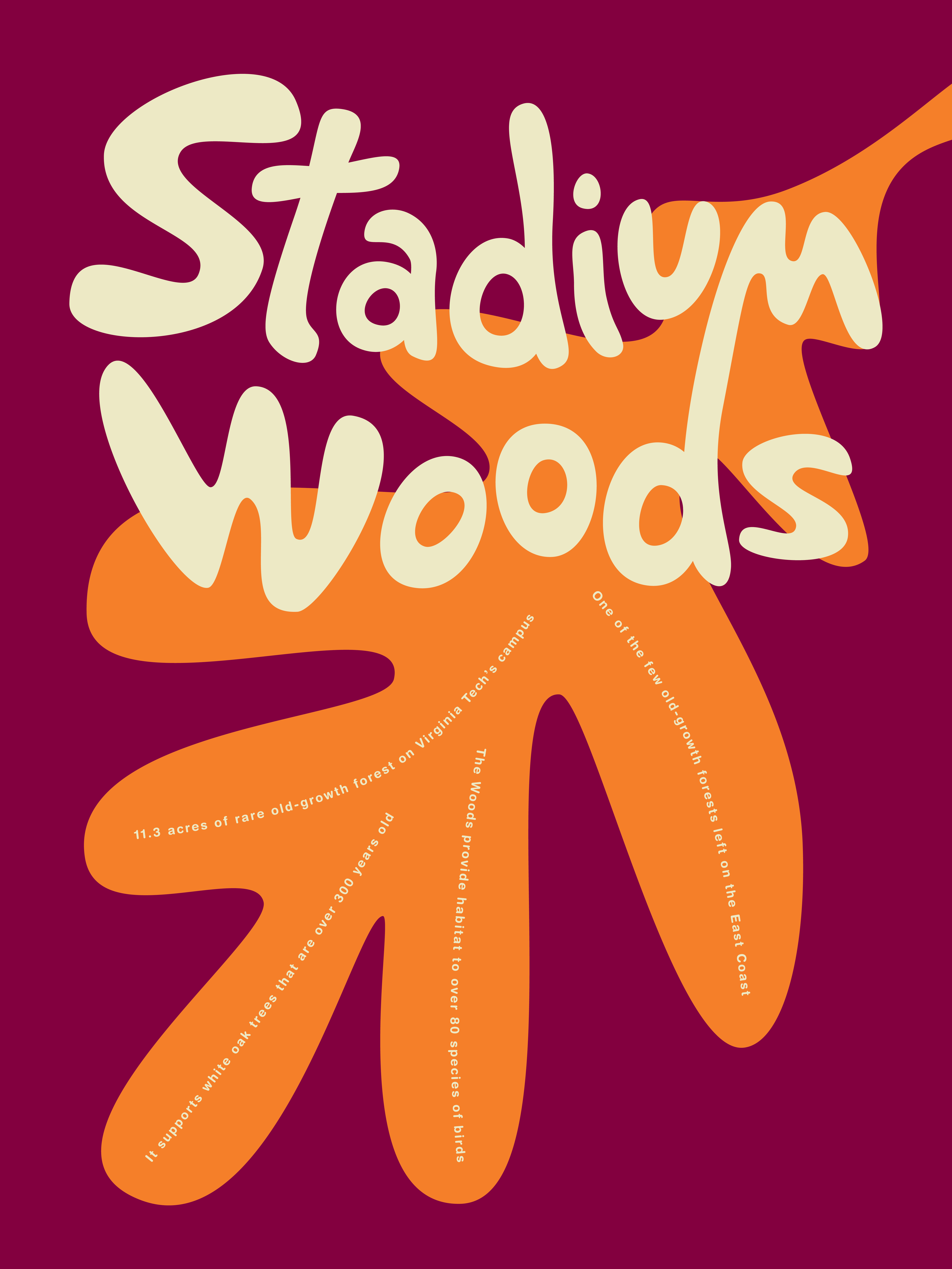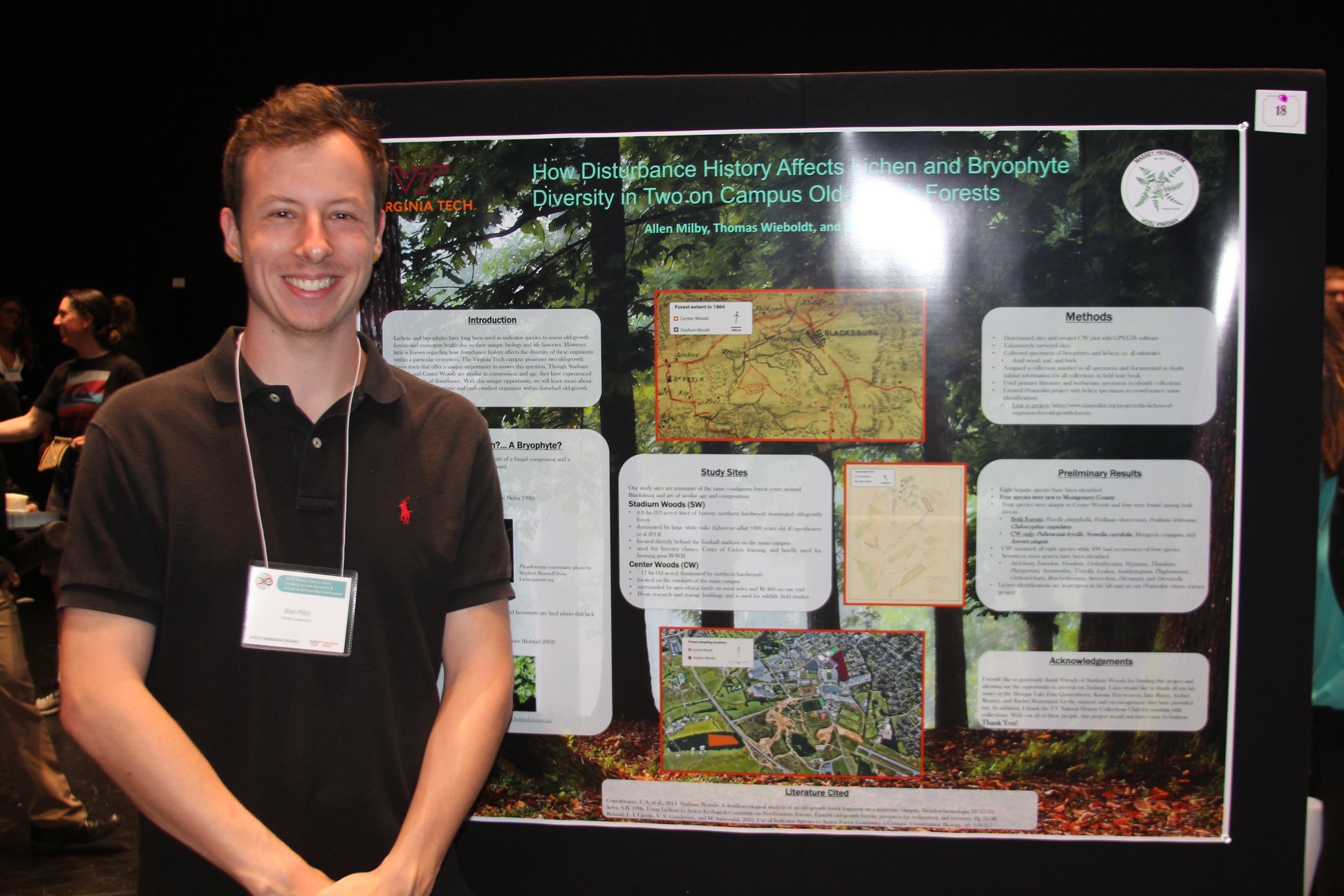This article was published in the spring edition of the 20 page Appalachian Woodlands magazine; if readers would like a free printed copy, contact Charlie Finley at 804-521-9611, or email charfinley@mindspring.com. Download the PDF of this article.
Virginia Tech has an unrecognized celebrity on its campus in Blacksburg. This leading lady is the shining star of natural resources tucked between the VA Tech athletics complex and the town. She has existed for millennia compared to the new man-made creations of the more celebrated Duck Pond and Drillfield. She predates the very existence of the university founded in 1872, the American Revolution and settlement by Europeans. Native Americans accessed natural springs and hunted game in this beauty for thousands of years prior to the arrival of Caucasians. The campus marvel is the unique Old Growth Forest that has miraculously survived development and natural disasters.
As I wrote for The Roanoke Times last fall, the “rare old growth forest ecosystem on Virginia Tech’s central campus” is a “12-acre woods” containing “all seven characteristics of an old growth forest including large old trees, dead snags, woody debris, and a well-developed understory of native plants, shrubs and uneven aged trees. Old growth characteristics make the woods a healthy habitat for native insects, butterflies, reptiles, nesting and migrating birds and small mammals.”
The Old Growth Forest, commonly known as Stadium Woods, is now recognized by the university administration and the board of visitors as a key natural resource and historical location on campus. In 2020 the rare ecosystem was literally put on the map as part of the campus master plan. However, this important recognition is new and a tremendous leap from the former wood lot classification. Many milestones have been reached on the journey to recognize the true value of the unique ecosystem.
Turf Battle
It has been ten years since the 2011-2012 public effort to save the VA Tech Old Growth Forest from the development of the Athletic Practice Facility (APF) now called the Beamer-Lawson APF. If you have forgotten about the national controversy or if you are new to the issue please view the 2012 Chris Risch video Save Stadium Woods – Virginia Tech – YouTube for a refresher or read award winning reporter Darryl FearsWashington Post article that lifted the debate to the national level: Virginia Tech sports facility plan in Stadium Woods draws opposition – The Washington Post. I won’t rehash the battle story as it is well documented and available publicly. The purpose of this article is to give you an update on where we have come since those stormy days.
After the decision was made in late summer 2012 to spare the woods from development a yearlong study was initiated to engage all stakeholders to determine other viable locations for the indoor football facility. Eventually in 2014 construction of the facility began on the already existing outdoor football practice field located next to Lane Stadium. This final site for the APF was always available to athletics yet deemed undesirable until their rejection of all other identified locations.
The APF was completed in summer 2015 and is an impressive 210 feet wide, 400 feet long and 86 feet high. Locally it is referred to as the Beamer Barn. Ironically the existence of the Old Growth Forest and its tremendous capacity to mitigate stormwater runoff from the massive roof of the APF was applied as an offset to avoid the additional cost of creating man-made stormwater systems.
Volunteer Efforts
One of the largest efforts to restore and protect the old growth forest characteristics are the thousands of volunteers led by Virginia Master Naturalists who have worked in the woods removing invasive plants over the last decade. These volunteer efforts, led for many years by Beth and Fred Umberger, have been remarkably successful. Ten years ago the woods were filled with invasives including English ivy, privet, multiflora rose, bittersweet, burning bush and others. The woods were covered in thick invasive vines and shrubs. The invasives were so dense that when you stood on the forest edge you could not see into the interior through the thickets.
Students, staff, professors and community members have worked tirelessly to remove the invasive plants by hand. Volunteers never use herbicides or power tools. As a result of the successful effort several dozen native perennial plants as well as shrubs and trees have now repopulated the woods. Perennial seeds were lying dormant in the soil waiting for the opportunity to reemerge and flourish. From these seedbanks there are now large colonies of Mayapple (Podophyllum peltatum) that continue to expand each spring under the ancient white oak trees estimated to be aged at 250-450 years. Many other ephemeral plants including Bloodroot, Cut-leaf toothwort, Wood poppy, Wild pinks, Soloman’s seal and Golden groundsel, to name just a few, reappear each spring. Please refer to iNaturalist to explore discoveries of plants, fungi, lichens and mosses in Stadium Woods.
The woods are populated with native shrubs including Flame azalea, Spicebush and Witch hazel. There are understory trees including Blackhaw viburnum, Dogwood, Redbud, American Holly and a former state champion Chokecherry. White Oak (Quercas alba) is the predominant tree species in the Old Growth Forest with Black Oak as the second. A few of the White Oaks were cored and aged in 2012 by Professor John Seiler revealing trees more than 300 years old. There is even an American Chestnut sapling in the forest and many native saplings of the iconic White Oak. An inventory of the trees by the Virginia Master Naturalists in 2011-2012 will be updated this summer by a VA Tech undergraduate researcher.
These efforts to remove invasive plants to allow restoration of the Old Growth Forest are critically important to the health of the ecosystem. The efforts, while successful, will remain ongoing indefinitely. The abundant existence of invasive plants from the surrounding community and campus continue to spread into the woods. New ambitious efforts to eliminate invasive plants in the surrounding neighborhoods and nearby campus areas are in the planning stages. Regardless of removal efforts there will continue to be an ongoing endeavor to prevent reseeding as well as removal of invasive plants in the forest.
Undergraduate Research funded by Friends of Stadium Woods
The Friends of Stadium Woods created an Endowment Fund through the Community Foundation of the NRV in 2012 to support research in and preservation of the Old Growth Forest. The fund has grown to a current value of $25,000 and we have awarded two grants to date.
Virginia Tech Massey Herbarium undergraduate students Allen Milby and Christine Herzog and curator Dr. Jordan Metzgar were awarded the first two grants from the fund in 2018 and 2022. Both grants helped projects that were collecting and identifying organisms that are much smaller than the woods’ ancient oaks.
Milby and Metzgar’s research focused on the bryophyte diversity of the Old Growth Forest. Bryophytes are small land plants that lack a vascular system and include mosses, liverworts, and hornworts. They are also often used as bioindicators to assess forest health. This study documented 21 moss species and four liverwort species in Stadium Woods, and expanded our knowledge of Virginia’s bryophytes by finding eight moss species and one liverwort species newly recorded in Montgomery County, VA. These collections will also be valuable baseline data for detecting changes to the wood’s ecology in the future. Their project was published last year in Northeastern Naturalist and can be read here.
Herzog and Metzgar are surveying, collecting and identifying the fungi of Stadium Woods to begin determining human impact on the funga and track changes in species diversity over time. So far, 82 mushrooms have been collected from Stadium Woods, which will be identified and stored in the herbarium for future projects. They expect that the heavy foot traffic in Stadium Woods has changed its fungal biodiversity probably reducing the number of ground-dwelling species compared to other forests and increasing the number of fungi that have a preference for disturbed habitats. The public can view the results and even contribute observations and identifications through an iNaturalist project.
Please consider a donation to the Stadium Woods Endowment Fund by giving online at https://cfnrv.org/ and click Give Now in the upper right corner. Complete the gift information and put “Friends of Stadium Woods Endowment” below where it reads “To further designate this gift please specify below.” Or to give by check make the check payable to CFNRV and put “Friends of Stadium Woods Endowment” in the memo line. Mail to the Community Foundation of the New River Valley, P.O. Box 6009, Christiansburg, VA 24068-6009.
Collaborations with VA Tech Facilities
In 2019 Virginia Tech hired Jamie King, Certified Master Arborist, to be the first University Arborist responsible for the overall planting, health care, safety and general maintenance for campus trees. The Friends and Virginia Master Naturalists work closely with Jamie on all efforts related to the Old Growth Forest. We meet regularly to discuss challenges to the integrity, regeneration and stewardship of the woods. Since teaming with Jamie, Wendy Halsey, Assistant Vice President of Facilities Operations, and others with VA Tech Facilities our communications and collaboration efforts have greatly benefited our organization and stewardship efforts for the forest.
Please learn more about Stadium Woods by visiting our newly redesigned website www.savestadiumwoods.com and watch Chris Risch’s 2018 beautiful YouTube film Preserve Stadium Woods. For the most current and up-to-date information about the Old Growth Forest please follow us on Facebook at Stadium Woods-VT’s Old Growth Forest. You are also welcome to contact me directly.
Rebekah Paulson, Executive Director of the Friends of Stadium Woods Rebekah.paulson@comcast.net , 540/ 250-6905
